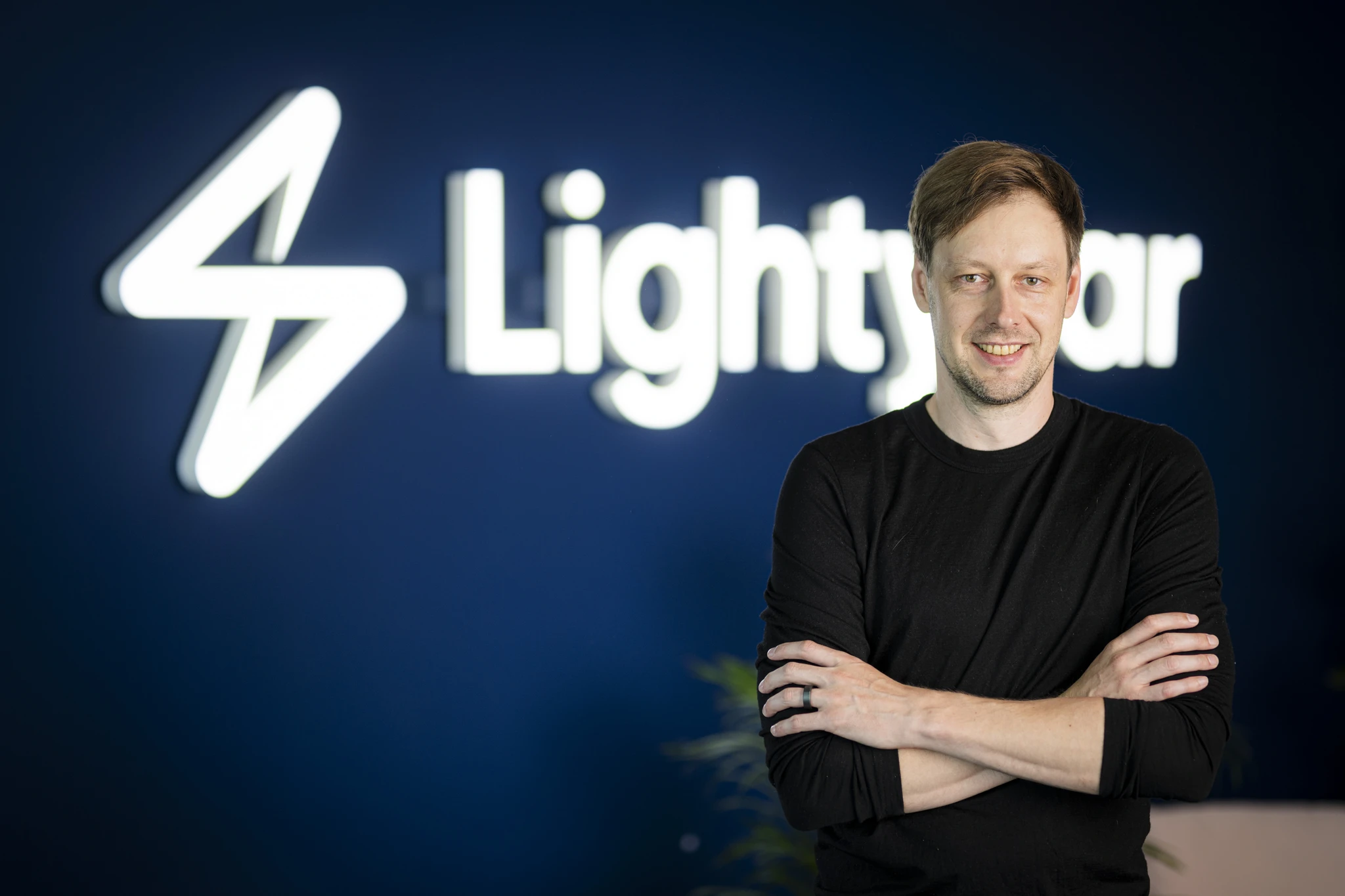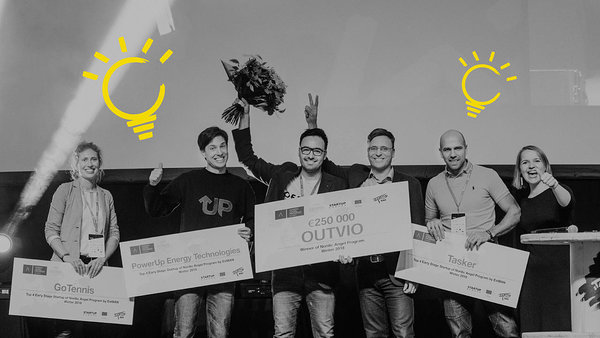
Ivar Kruusenberg, CEO of PowerUp Energy Technologies: “Running a science-based company takes a lot of persistence”
Ivar is also one of the speakers of sTARTUp Day. He will give a talk on how to be prepared for investors and how to negotiate with them.
This interview was written by Kai Aet Salvan, a member of the sTARTUp Day Marketing and PR team.
You were a longtime student, then a scientist and now an entrepreneur. How do you see yourself - rather as a scientist or entrepreneur?
I'd say it's 50:50. Of course, nowadays managing my company takes most of my day. There are so many things to do and there is so much to learn. At the same time, it is not possible to step down from the position of a scientist by running a science-based firm. In order to be relevant in this field and to bring new solutions, you have to be at the center of the process and keep up to date, which is why I remain a researcher.
What are the main characteristics or values that are essential for a scientist?
Mainly persistence and patience. Scientists must be extremely consistent in their activities and must possess a desire for knowledge. One could even say that this requires a certain type of person who is constantly looking for answers to questions and exploring them in depth.
However, when you want to be successful as a scientist, you have to state the fact that science is not done alone - for the most part, someone is a so-called manager and someone is at the lab. Each project has its project manager, who deals with the organizational side, in order to deal with a scientific topic or to get some advice. But one does not exclude the other. For example, many Nobel laureates are not good leaders but have managed to do their research alone or as a duo.
Nowadays it tends to be that a good scientist must also be a good leader. There is a strong link between business and science. Because science is very project-based, it means that you have to do project applications all the time and one person can’t do everything. As a rule, the teams are quite large to help with the project because it is quite difficult to do research and write at the same time. All parts are divided between several people. Especially in Estonia, where the prospect is 1 to 4 years, and after that the research money runs out, and it is not sure what will happen next. As a rule, projects last for one year, so there may be times when you have to pack up your things and go to manufacturing work.
How could a young science student at the University of Tartu start their own business?
First of all, you must have an idea, and if you know how to execute your plan, you have to put together a team, because a one-man research company is still a company, but it’s difficult to get far. If you have all three components, you just have to start and go along that path. It is not easy and I don’t recommend it to everyone.
Starting a science-based business isn’t undoubtedly the easiest task, as it is very difficult to find financing, it is very time-consuming and generally capital-intensive. It's not programming where you have two people and you can get things done with a long week and a box of Red Bull. Bringing a research-intensive product to business is a very long process that takes years and years.
Can you give advice on how should a science-based company find financing?
The Estonian Research Council awarded four grants a year to help bring science into business. Similar grants exist in the European Union to encourage it, but there are few of them and they are difficult to obtain. The second option is to use risk investors, but this is extremely difficult for research-intensive projects. Because research-intensive companies need a lot of time, then investors are not very risk-averse. And there is a lot of risk. And, of course, there is an option to borrow from the bank but I would say that this is the worst option and I wouldn’t recommend that.
Moving on to a bit more technical topics, your company has been built around fuel cells. What exactly are they and how can we use them?
A fuel cell is a device that converts the chemical energy of oxygen and hydrogen into heat, electricity, and water. It is a purely chemical reaction device, which gives it the advantage of being completely maintenance-free and is often more reliable than any other source of electricity.
Fuel cells can be used to generate electricity, such as electric cars and households. And not only to produce electricity but to heat the house and water, because one of the by-products, in addition to electricity, is thermal energy. In essence, it can be used wherever electricity is needed, such as electric trains. Instead of using power lines, hydrogen can be generated directly on the train. For example, buses are a very common application for fuel cells. In short, fuel cells can be used wherever there is a need for electricity and the device is larger than a laptop or other portable electronic device.
How can fuel cells be used in combination with other green energy production, such as wind and solar energy?
Co-operation is easy because hydrogen is then used as an energy storage device for surplus solar and wind energy, which is not used immediately and should be stored. Batteries are not the best solution because they drain in cold weather, lose capacity over time, and have limited charging speeds. Because of this, it is a much better solution to store this electricity as hydrogen and use it when there is a need for electricity in the night, for example, when there is no sun or wind.
Nowadays, fuel cells are used in combination with a wind generator or a solar cell because it makes storage and energy transportation much easier. Hydrogen can stay in the cylinder for months or even years and can be used at any time. Although it has many advantages, it is not easy for a fuel cell to store hydrogen, which is the main reason why this technology is not used in the home on a daily basis or why it is not used under each solar panel. But it is definitely something that will be used more and more in the future.
What have been the biggest challenges on the journey of PowerUp Energy Technologies? What have you learned during this process?
As mentioned above, finding money is the most difficult challenge, but there is also a huge shortage of labor in Estonia. These are the two biggest challenges. And, of course, as a researcher, I have had to learn from scratch how to run a business.
During this time, I have grown as a person, an entrepreneur and a scientist, and how to manage and organize everything. I have had to give up many things because of this, for example, there is less time for the family. It has been quite a challenge, which requires daily development and the acquisition of new information. But on the other hand, it has been an interesting journey.
And of course, scheduling has been a big challenge because I have to manage research, projects and the company and squeeze everything else in between. Perhaps scheduling is one of the key factors. The ability to delegate to the right people must not be underestimated either, because you cannot do everything by yourself.
Earth's natural resources are shrinking rapidly, and green technology is booming. What can we expect in the future? How do you see your role in it?
People's awareness of clean technology has changed, and the more aware society is, the easier it is to implement and accept it in people's daily lives. The richer society is, and the more elementary needs are met, the more environmental concerns will be addressed. When your stomach is full, you have a job and you’re healthy, you start looking at what is happening around you.
Now that Estonia has entered a rich society, it is possible to think more about how to do things in a more natural or resource-friendly way. Certainly, cleantech and sustainability are the keywords that are coming up more and more and people are paying more attention to them.
What we do is green technology and we are at the forefront of sustainability. Our contribution is certainly quite high, especially in our market segments. Our goal is to replace traditional generators with our fuel cell technology.
When you started your studies, did you imagine you end up where you are now?
Since we only have one national university, and that is the University of Tartu, it was the most logical choice for me and has undoubtedly made a strong contribution to my development in one way or another and made me who I am today. Both the lecturers and the whole culture have certainly left a deep mark.
At first, I didn't imagine studying chemistry at all, and during my studies, I was convinced that I was a pure scientist and would stay like that. But over time, I realized that if I wanted to move in my direction, I had to start doing my own thing.
But surely I would not have started working with fuel cells if I had not gone to the University of Tartu. When I started my studies, no-one really talked about green technology, something that has become a hot topic lately, and I think that is good.

Combining Wise Lessons and Lightyear Ambitions: Martin Sokk’s Mission to Make Investing Simple for Everyone

